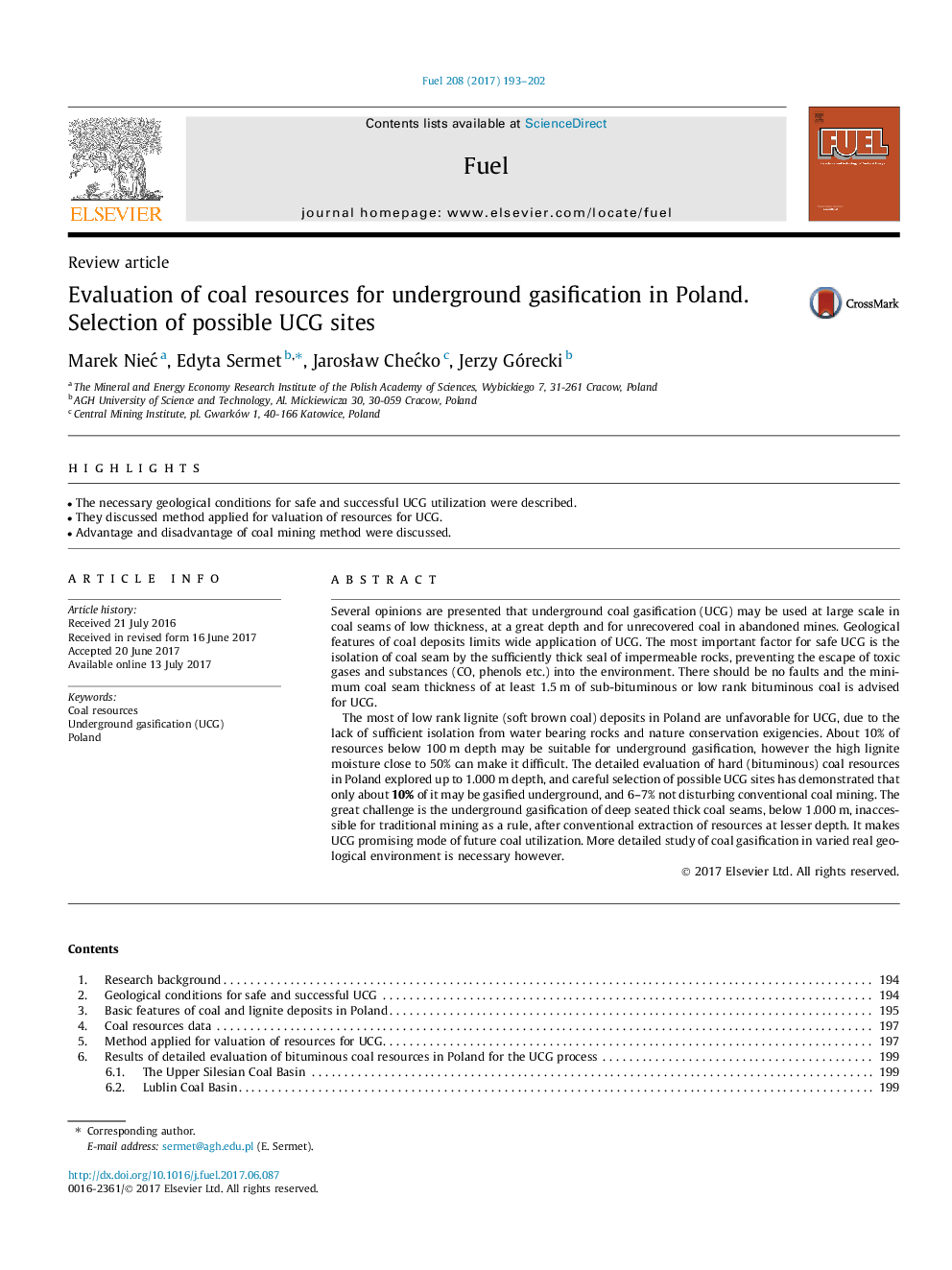| Article ID | Journal | Published Year | Pages | File Type |
|---|---|---|---|---|
| 6474046 | Fuel | 2017 | 10 Pages |
â¢The necessary geological conditions for safe and successful UCG utilization were described.â¢They discussed method applied for valuation of resources for UCG.â¢Advantage and disadvantage of coal mining method were discussed.
Several opinions are presented that underground coal gasification (UCG) may be used at large scale in coal seams of low thickness, at a great depth and for unrecovered coal in abandoned mines. Geological features of coal deposits limits wide application of UCG. The most important factor for safe UCG is the isolation of coal seam by the sufficiently thick seal of impermeable rocks, preventing the escape of toxic gases and substances (CO, phenols etc.) into the environment. There should be no faults and the minimum coal seam thickness of at least 1.5Â m of sub-bituminous or low rank bituminous coal is advised for UCG.The most of low rank lignite (soft brown coal) deposits in Poland are unfavorable for UCG, due to the lack of sufficient isolation from water bearing rocks and nature conservation exigencies. About 10% of resources below 100Â m depth may be suitable for underground gasification, however the high lignite moisture close to 50% can make it difficult. The detailed evaluation of hard (bituminous) coal resources in Poland explored up to 1.000Â m depth, and careful selection of possible UCG sites has demonstrated that only about 10% of it may be gasified underground, and 6-7% not disturbing conventional coal mining. The great challenge is the underground gasification of deep seated thick coal seams, below 1.000Â m, inaccessible for traditional mining as a rule, after conventional extraction of resources at lesser depth. It makes UCG promising mode of future coal utilization. More detailed study of coal gasification in varied real geological environment is necessary however.
